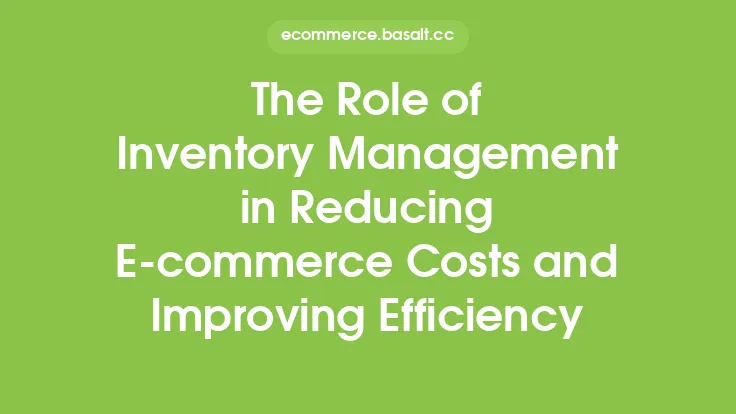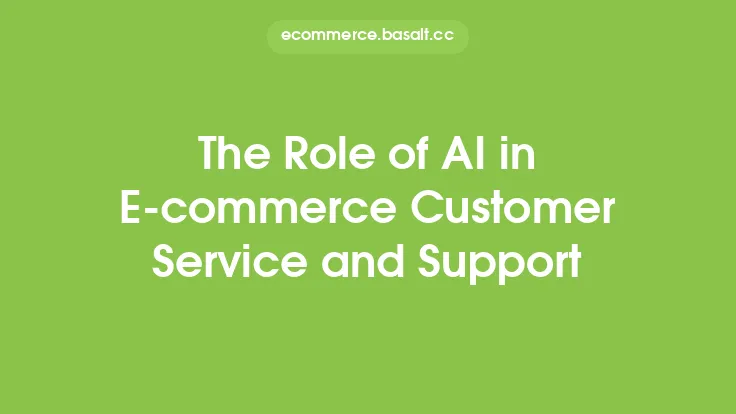The e-commerce industry has experienced rapid growth over the past decade, with more and more consumers turning to online shopping for convenience and flexibility. As a result, the demand for efficient and reliable shipping and logistics services has increased significantly. One key factor that has contributed to the improvement of shipping and logistics is the integration of Artificial Intelligence (AI) technology. AI has revolutionized the way companies approach delivery, enabling them to streamline their operations, reduce costs, and enhance customer satisfaction.
Introduction to AI in Shipping and Logistics
AI refers to the development of computer systems that can perform tasks that typically require human intelligence, such as learning, problem-solving, and decision-making. In the context of shipping and logistics, AI can be applied in various ways, including predictive analytics, machine learning, and natural language processing. By leveraging these technologies, companies can gain valuable insights into their operations, optimize their routes and schedules, and automate many of their processes.
Benefits of AI in Shipping and Logistics
The benefits of AI in shipping and logistics are numerous. For one, AI can help companies reduce their transportation costs by optimizing their routes and schedules. By analyzing data on traffic patterns, road conditions, and weather, AI algorithms can identify the most efficient routes and schedules, reducing fuel consumption and lowering emissions. Additionally, AI can help companies improve their delivery times, enabling them to provide faster and more reliable service to their customers. This, in turn, can lead to increased customer satisfaction and loyalty.
Applications of AI in Shipping and Logistics
There are several applications of AI in shipping and logistics, including predictive maintenance, freight audit and payment, and supply chain optimization. Predictive maintenance involves using AI algorithms to analyze data on equipment performance and predict when maintenance is required, reducing downtime and improving overall efficiency. Freight audit and payment involves using AI to analyze invoices and identify errors or discrepancies, ensuring that companies are not overpaying for their shipping services. Supply chain optimization involves using AI to analyze data on supply chain operations and identify areas for improvement, enabling companies to streamline their operations and reduce costs.
AI-Powered Shipping and Logistics Solutions
There are several AI-powered shipping and logistics solutions available, including transportation management systems, warehouse management systems, and logistics platforms. Transportation management systems use AI to optimize routes and schedules, reducing transportation costs and improving delivery times. Warehouse management systems use AI to optimize inventory management and warehouse operations, improving efficiency and reducing costs. Logistics platforms use AI to connect shippers with carriers, enabling them to find the best rates and services for their needs.
Challenges and Limitations of AI in Shipping and Logistics
While AI has the potential to revolutionize the shipping and logistics industry, there are several challenges and limitations that must be addressed. For one, AI requires large amounts of data to function effectively, which can be a challenge for companies that do not have access to this data. Additionally, AI algorithms can be complex and difficult to interpret, requiring specialized expertise to implement and maintain. Furthermore, AI is not a replacement for human judgment and decision-making, and companies must be careful not to rely too heavily on automation.
Future of AI in Shipping and Logistics
The future of AI in shipping and logistics is exciting and rapidly evolving. As AI technology continues to advance, we can expect to see even more innovative solutions and applications in the industry. For example, the use of machine learning and deep learning algorithms is expected to become more prevalent, enabling companies to analyze larger amounts of data and make more accurate predictions. Additionally, the integration of AI with other technologies, such as the Internet of Things (IoT) and blockchain, is expected to create even more efficient and transparent supply chains.
Best Practices for Implementing AI in Shipping and Logistics
For companies looking to implement AI in their shipping and logistics operations, there are several best practices to keep in mind. First, it is essential to start small, focusing on a specific area of operations and scaling up gradually. Second, companies must ensure that they have the necessary data and infrastructure to support AI implementation. Third, companies must be careful to address any potential challenges or limitations, such as data quality issues or lack of expertise. Finally, companies must be willing to invest in ongoing training and development, ensuring that their employees have the skills and knowledge needed to work effectively with AI technology.
Conclusion
In conclusion, AI has the potential to revolutionize the shipping and logistics industry, enabling companies to streamline their operations, reduce costs, and enhance customer satisfaction. By leveraging AI technology, companies can gain valuable insights into their operations, optimize their routes and schedules, and automate many of their processes. While there are several challenges and limitations to AI implementation, the benefits are clear, and companies that invest in AI technology are likely to see significant returns on their investment. As the industry continues to evolve, we can expect to see even more innovative solutions and applications of AI in shipping and logistics.





